How to cook lamb shanks
From prep to braising, our guide will make sure you cook lamb shanks just perfectly
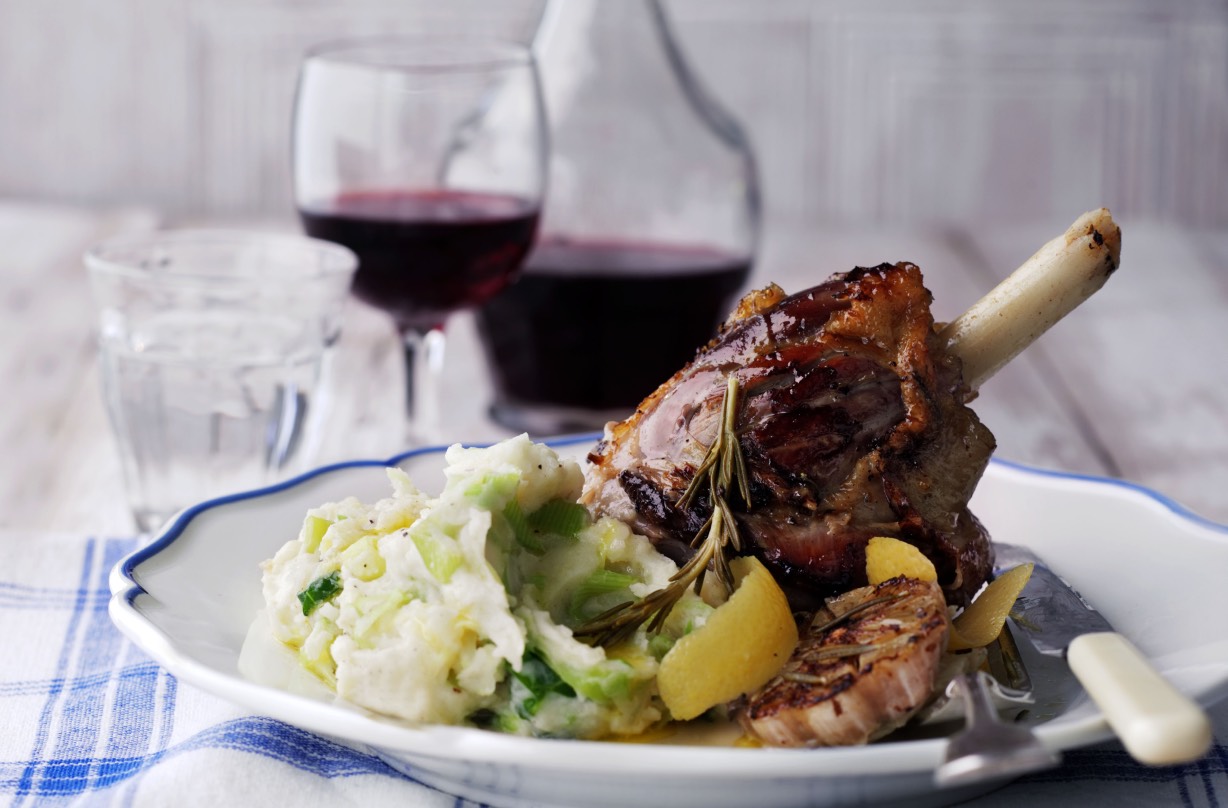

Find out everything you need to know about cooking lamb shanks. From prep to braising, our ultimate guide will make sure you cook this popular meat perfectly every time.
Lamb shank is a cut of meat on the bone, which has been taken from the top of the lamb's leg. The ‘fore shank’ is from the front legs, while the back legs are referred to as ‘hind shanks’.
Traditionally a lamb shank was known as a very cheap cut of meat, however with a spike in popularity over the past few years, lamb shanks have recently increased in price. A pack of two small lamb shanks can be priced anywhere between £5-£10 a pack from the supermarket.
It might not seem much but when compared to lamb chops, which cost an average of £3-£6 per pack of four, it's a big difference in price. With this in mind, lamb shanks are often served as part of more indulgent meals whether catering for a dinner party or special occasion.
Lamb is usually enjoyed during the spring and summer months and is only considered as such for the first year of the animal's life, anything past this and it would be classed as hogget, and then mutton from 3 years onward.
Lamb shank is a tender cut of meat that pairs well with root veg, a variety of potatoes, and a glass of red wine. Cooking lamb shank is much easier than you may think and to help you avoid any mistakes, we’ve put together some expert advice.
*Where to buy lamb shanks
*How to prepare lamb shanks
*How to cook lamb shanks
*How to cook braised lamb shanks
*What temperature should lamb shanks be cooked to?
*How to cook lamb shanks in a slow cooker
*How do you know when lamb shanks are cooked?
*Why is my lamb shank tough?
*Our best lamb shank recipes
GoodtoKnow Newsletter
Parenting advice, hot topics, best buys and family finance tips delivered straight to your inbox.
How to cook lamb shanks
Preparation: The shank will mostly be prepped by your butcher, but there are a couple of things to do before cooking. In order to get juicy, tender meat, make sure to trim the ‘silverskin’ from the lamb shanks - this is the white, silvery skin on the outside of the meat. If your shank is particularly fatty, be sure to remove any excess fat too.
Using a sharp paring knife, cut the tendons away from the top of the bone, continue to do this all the way around the shank. As the meat cooks, it will shrink away from the bone nicely and make for a neater presentation.
Cooking: When it comes to cooking, the key is to take your time. Lamb shanks are a very tough cut and need to be cooked slowly for a period of time. The fats and sinews in this cut need to render down, making for beautifully tender meat that’s full of flavour.
You can cook it low and slow for up to 8 hours which is great for slow cookers. Or you can cook it higher for around 2 hours in the oven.
Senior Development Chef, Eddie recommends braising slowly, this involves cooking the meat in liquid (often stock or wine, or a mixture of both), at a low temperature in the oven, or on the hob. This gentle slow cooking process is a combination of roasting and steaming and transforms cuts of meat that are too tough to roast, into mouth-watering dishes.
As lamb shanks are naturally on the bone, there will be an amazing added depth of flavour. The bone also helps minimise shrinkage of the meat when roasting, so that the joint holds its shape better. Plus, you can use them to make a delicious stock after your meal.
When it comes to adding flavours to lamb, a traditional mint, redcurrant, red wine, tomato base is always great with lamb. Lamb is also used regularly in Indian and North African dishes too, so pairings such as ras el hanout, dried fruits, a variety of nuts, and even rose will complement this meat.
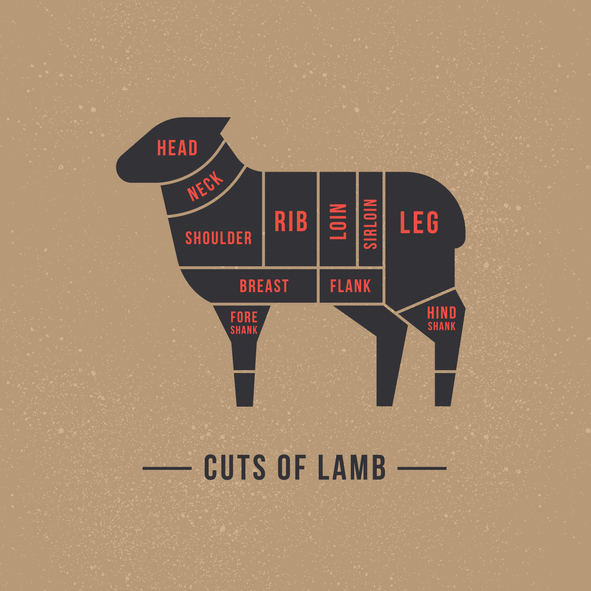
How to cook braised lamb shanks
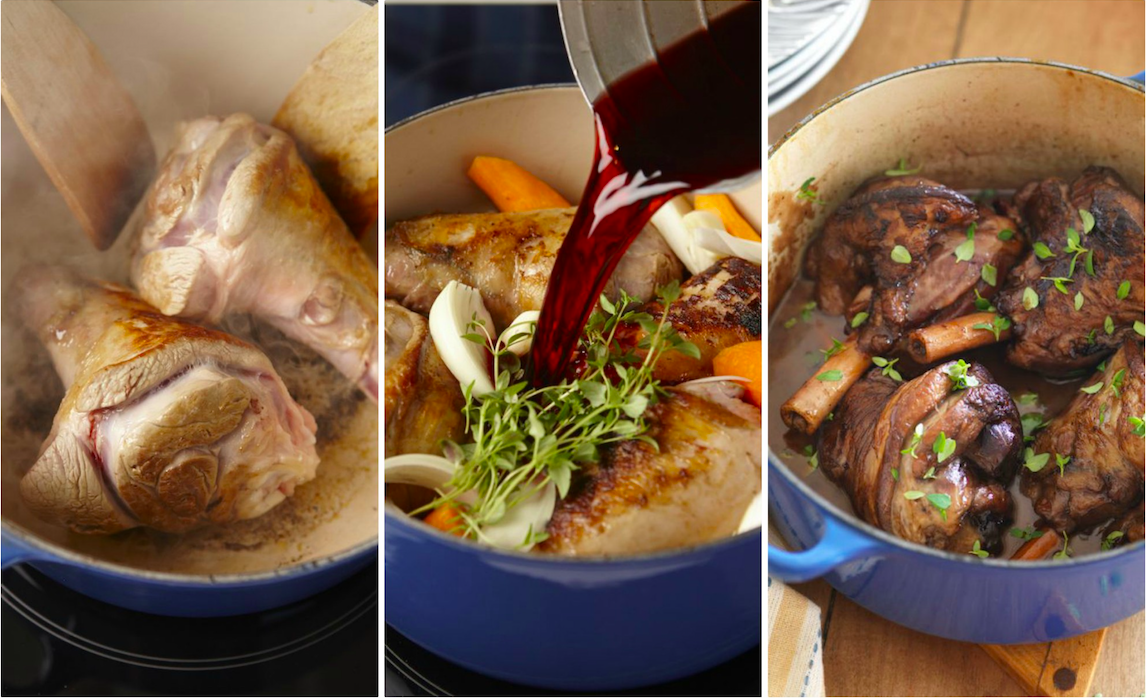
Ingredients
- vegetable oil, for frying
- 4 lamb shanks
- 90g plain flour
- Large glass red wine
- 1 onion, sliced
- 1 large carrot
- 3 fresh sprigs of rosemary
- 2 fresh sprigs of thyme
- 2 bay leaves
- 300ml chicken or vegetable stock
Method
- Allow the meat to come to room temperature and pat dry with kitchen paper.
- Heat a large ovenproof pan on high heat, add a little oil and sear the meat in batches in a single layer until evenly browned all over.
- Add wine, stock, vegetables, and herbs. Make sure that the liquid covers at least a third to a half of the meat and bring to a gentle simmer.
- Cover with a lid and transfer into the preheated oven or continue to simmer gently on the hob at a consistent temperature. The oven method is gentler and the meat should not stick to the pot.
- Check from time to time and top up with liquid if needed. See below for times and oven temperatures. This recipe serves four people.
What temperature should lamb shanks be cooked to?
The temperature you cook lamb shanks will vary on the method you choose to cook them.
- Classic braised lamb shanks cook at 180ºC-200ºC/Gas 4-6 for 1 ½ to 2 hours
- Slow-braised lamb shanks cook at 140ºC-160ºC/Gas 1-3 for 4-6 hours
How to cook lamb shanks in a slow cooker
Cooking lamb shanks in a slow cooker is a similar process to braising, the meat will however be much more tender and moist and will fall off the bone but will, of course, take longer to cook overall.
- Allow the meat to come to room temperature and pat dry with kitchen paper.
- Heat a large ovenproof pan on high heat, add a little oil and sear the meat in batches in a single layer until evenly browned all over. Transfer to the bowl of a slow cooker.
- Deglaze the pan with the red wine and add to the slow cooker, along with the stock, vegetables, and herbs. Make sure that the liquid covers at least a third to a half of the meat and bring to a gentle simmer.
- Turn the slow cooker on high and leave to cook for 8 hours. Check halfway through and top up with liquid if needed.
How do you know when lamb shanks are cooked?
We recommend checking the casserole after 1 hour and at regular intervals thereafter. Insert a meat fork into the thickest part of the joint – it should slide in and out easily and the meat shouldn't be tough.
You can also use a meat thermometer to test the internal temperature of the lamb shank to make sure it's cooked fully:
- 53-57C for medium-rare
- 58-62C for medium
- 63-67C for medium-well
Why is my lamb shank tough?
If you are experiencing issues with the texture of your lamb shanks and finding the meat tough, this could be the result of a couple of things.
Firstly, you may not have let the lamb shanks cook for long enough. The shank is tough meat as it's a muscle that is put to work, so it will only be tender if you show it a little patience.
It could also be that you haven’t prepared it well enough. Leaving the silverskin and not trimming the tendons can also result in tough meat.
Our best lamb shank recipes
Lamb shank is luxurious meat that can be served in a variety of different ways. It's all about choosing a quality cut of meat, taking your time when cooking, and pairing it well with some of our inspirational recipes.
Pot-roasted harissa and vegetable lamb shanks
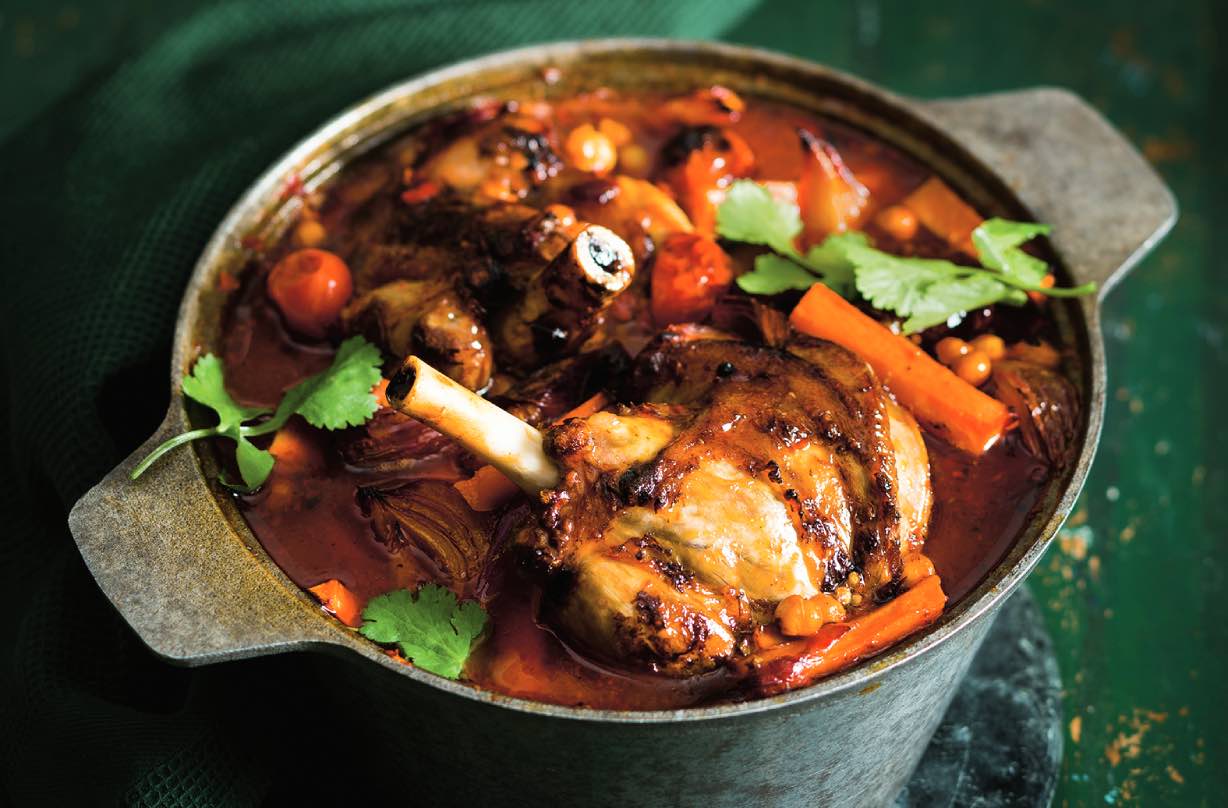
With ground cumin and harissa paste to add a spicy kick to the meat, this lamb dish is full of flavor and makes a great alternative to your usual lamb casserole.
Get the recipe: Pot-roasted harissa and vegetable lamb shanks
Tunisian braised lamb shanks
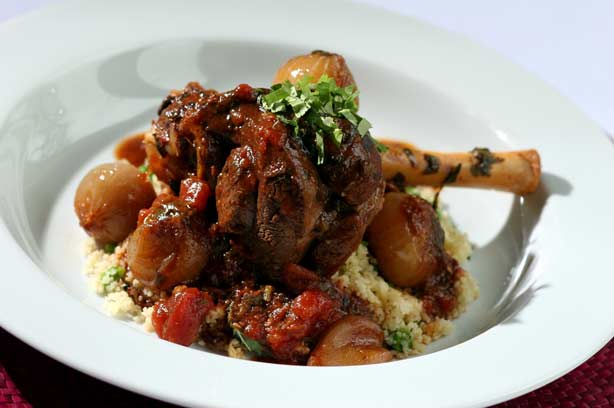
Spicy Tunisian harissa paste adds a fiery flavour to these lamb shanks.
Get the recipe: Tunisian braised lamb shanks
Minted lamb shanks with barley
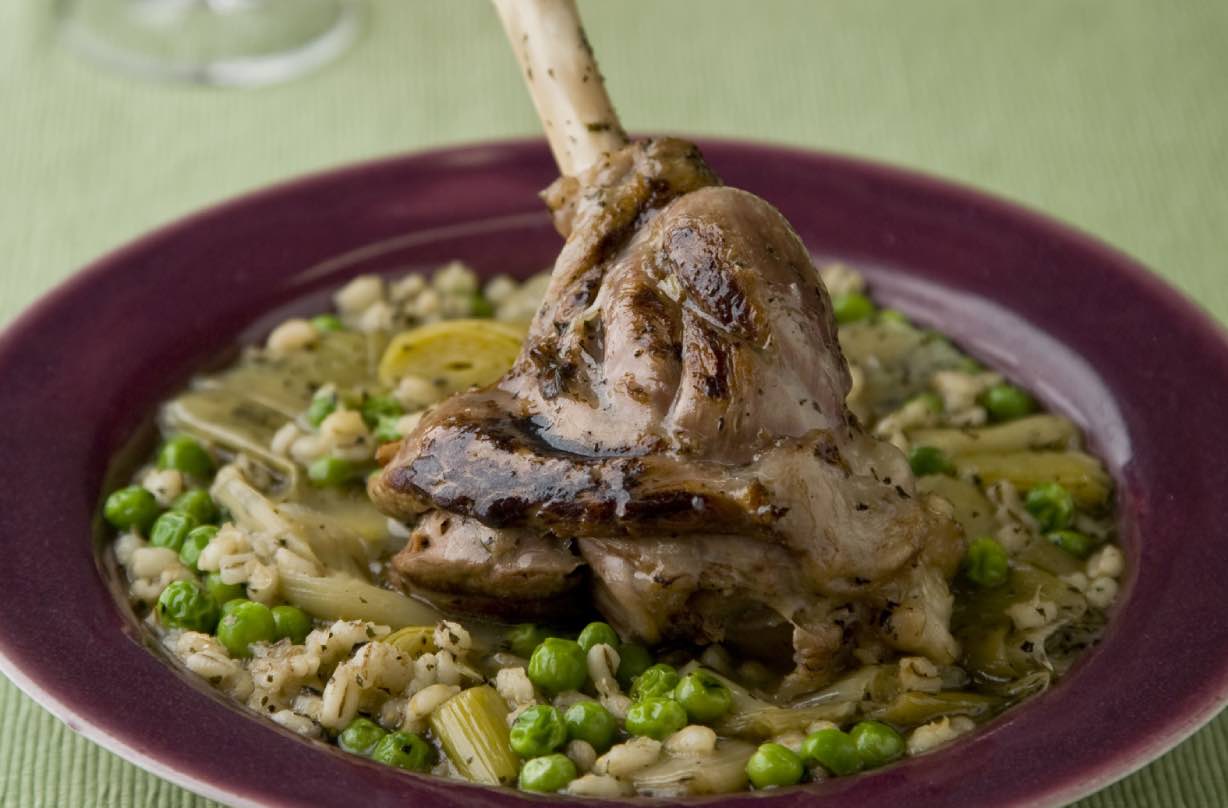
Brown the lamb to give this dish a really great flavour – it’s easy to make and you can freeze it too.
Get the recipe: Minted lamb shanks with barley
Sophie Conran’s lamb shanks with caramelised onion
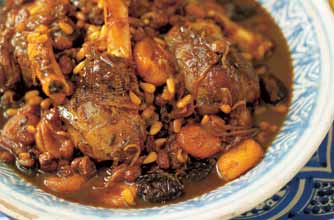
This sweet and mildly spiced lamb shank recipe from designer Sophie Conran is a real winner.
Get the recipe: Sophie Conran’s lamb shanks with caramelised onion
Where to buy lamb shanks
We would always recommend choosing British lamb, and organic wherever possible. Buy from your local butcher and that way they can clear up any queries you may have about the meat. They can also tell you more about the location and welfare of the animal so you know you're getting a good quality cut of meat for a good price.
Eddie McDonald, Senior Development Chef at Donald Russell shared some of his expert advice with us: 'The best quality lamb should be matured to ensure that the meat will be tender, flavoursome, and succulent. Donald Russell lamb is matured for a minimum of 10 days, depending on the season. The butchers use their skill and experience to ensure that the lamb has been matured for just the right amount of time.
They can tell when the lamb is ready as it will have a slightly darker colour than unmatured lamb and it will have a good, even marbling with small flecks of fat throughout the muscle. This is critical to the flavour of the meat, as the fat melts during cooking making it juicy and tasty.'

With over 12 years of experience, arts graduate Keiron turned to food to channel his creativity, specifically cake decorating. Keiron set up his wedding cake business in 2015. And, in late 2016 won a scholarship at the world-renowned culinary institute - Le Cordon Bleu, London, where he studied the art of French Pâtisserie. He's worked in some of London’s finest 5-star hotels, collecting a wealth of knowledge along the way. As a Food Writer and Stylist food isn’t just a job, it truly is Keiron's passion.